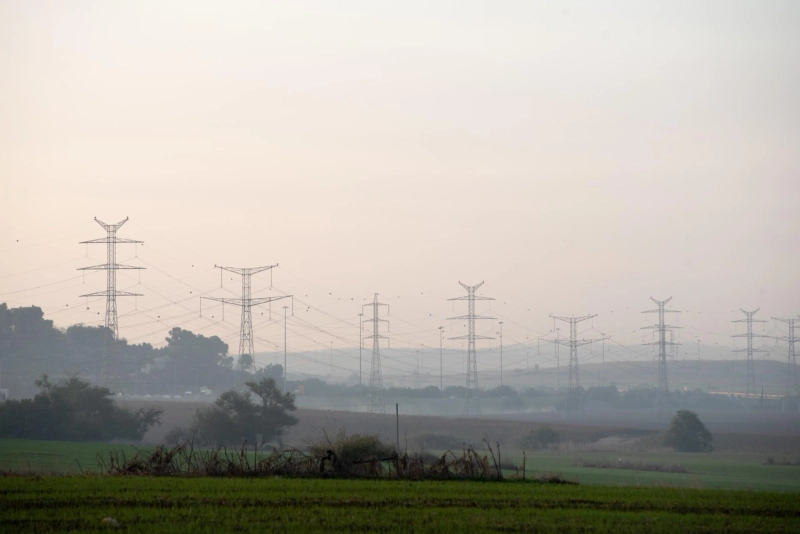The UK’s energy grid is being transformed to meet the challenges of a decarbonised and sustainable future. In the past, large-scale generation from coal and gas-fired power stations has been the backbone of the system. Currently, there is a need for a more dynamic and adaptable system that is capable of integrating inputs from the generation and consumption of renewables. Technological advancement regarding new energy technologies and electric vehicles, heat pumps, etc, is changing the operation of the system output in the UK, and the way consumers think about energy.
This blog outlines the key changes shaping the UK energy grid and explains emerging sector principles in simpler terms:
The Shift to Low-Carbon Generation
Britain's energy landscape has undergone a clear transition away from fossil fuels and towards renewable energy generation. Hornsea wind farm and off Yorkshire's coast, is generating enough electricity to power over a million homes when the wind's blowing properly. Solar panels have popped up on fields from Cornwall to Scotland, while engineers are even experimenting with capturing power from our tides.
However, the renewable resources provide new operational problems through variability called "intermittency." Solar systems can only generate during daylight, and wind generation depends on wind weather conditions.
National Energy System Operator (NESO), the grid operators have to try and forecast supply and demand with sufficient precision, and in real time, to manage power flows. The purpose is to avoid dispatching energy in excess or receiving energy deficient, which can compromise system reliability.
Energy Storage System
The UK's transition toward a more flexible, reliable energy grid prioritises new advanced storage approaches. The Minety battery project, located in Wiltshire, is a major energy storage solution. A large project where excess electricity is stored when renewable output is high and fed back onto the grid at peak demand periods. It also plays an important role in the overall system by smoothing out the demand decline or variability.
Pumped hydroelectric storage also forms part of the UK’s strategy. The principle is simple. When there is excess power, it is used to pump water through a system or a channel, from a lower-located source to a higher source. When the demand for power spikes, the run-of-the-river water kept in the higher location is allowed to flow back down and generate power through the turbines.
A more recent alternative is green hydrogen, where an unwanted excess of renewable electricity is used to drive electrolysis (which generally uses fossil fuel), splitting water into hydrogen and oxygen. The hydrogen can then be stored for extended periods of time (weeks or months), and when needed, it can be used to convert back into power, for its transport, or other industrial uses. Moreover, it adds even greater flexibility to the future UK energy strategy.
Smart Grid Enabling Technologies
Updating the distribution network in modern times has been just as important as improving generation and storage. Smart grid technologies provide the capability to exchange real-time information to support operating the grid system with increased responsiveness and efficiency. Therefore, smart meters have provided all consumers (and operators) with real-time data on how much, when, and where consumption is happening, to optimise demand response to optimise energy procurement and demand management.
Smart technologies, accompanied by advanced analytics and optimisation control algorithms, are applied to improve grid performance by measuring usage and optimising the flow of electricity across the physical electricity connection path. Smart technologies and electricity usage data can integrate Electric Vehicles (EVs) charging and operation, home energy storage devices, and distributed generation sources like solar rooftop systems, to further enhance flexibility in the grid system.
Vehicle to grid (V2G) technology is now being tested in the UK, not only be an EV to pull electricity from the grid to charge its battery, but to return electricity to the grid when needed as an option in providing services and create new streams of value for consumers to get paid.
Distributed Generation and Prosumers
Grid systems are changing from a traditional centralised one-way power flow model proven in the last century, towards an approach where distributed generation will send power back into the system via small generators such as residential solar, community wind, or household batteries that generate power locally, contributing towards resiliency and local choices.
Current grid management is addressing 'prosumers', which allows homes and businesses to consume and produce electricity. Peer-to-peer energy trading is being designed and implemented in pilot projects where digital platforms enable consumers to sell extra energy back to their neighbours, being a completely new model for trading energy.
Addressing Infrastructure and Security Challenges
Upgrading the workforce will be a major undertaking, both technically and financially. Building networks, cybersecurity, and operating practices will all be integral to handling the growth of distributed assets and digital controls.
Those costs are considerable, but the future results are positive: increasing reliability, building sustainable supply, reducing costs, and increasing security.
Conclusion
The UK's energy grid evolution is ambitious, but it is necessary. The UK is developing an efficient, flexible, and future-proof network via a strategic investment in renewable generation with storage systems, smart grid technologies, and decentralised infrastructure.
Many of the changes happen in the background, but everyone will feel the changes. More reliable electricity, cleaner air, and the opportunity to engage in energy markets. The ongoing evolution of the UK’s grid represents a technological achievement, but much more importantly, a commitment to a resilient and sustainable energy future.

